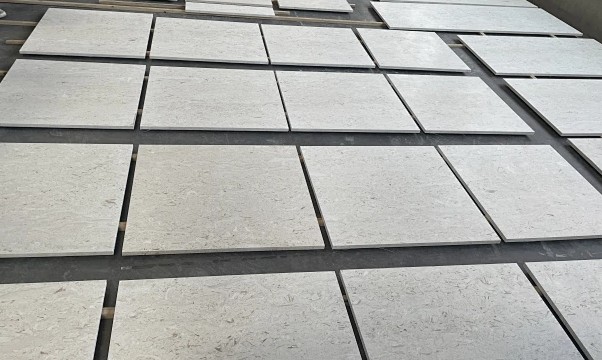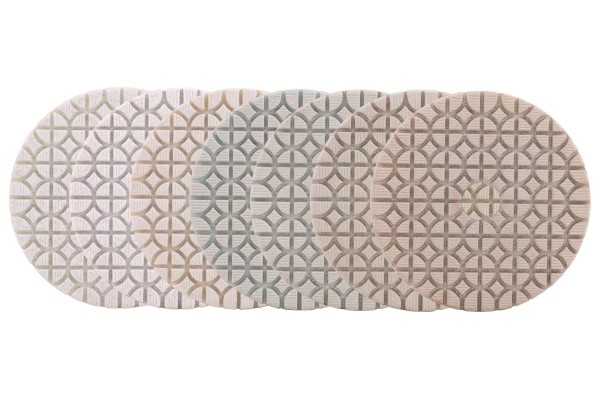How do you polish artificial stone?

In practical applications, the grinding and polishing of artificial stone can be a challenge to obtain a glossy finish. Common problems encountered during this process include yellowing, blackening, and difficulty producing a glossy surface. Understanding the reasons behind these challenges is critical to overcoming them and achieving the desired polish.
It Is Normal For Artificial Stone To Be Difficult To Shine When Polished
Reasons why artificial stone is difficult to shine
Aggregate: Artificial stone aggregate is a fine material formed from raw stone through a series of operations such as bombing, hammering, crushing, and grinding. Aggregate becomes weaker when broken into pieces, making it difficult to achieve a glossy surface during polishing.
Resin: The binding agent of resin-based artificial stone is unsaturated resin, and commercially available stone grinding discs also use this resin as the binding agent. The hardness of both resins is almost the same. The high temperatures generated during continuous grinding cause the colloid to expand and contract, resulting in cracks, discoloration, and a difficult-to-achieve glossy surface.
Strategies to Enhance Polishing Effects
Improving aggregate strength: Addressing challenges related to aggregate strength includes optimizing crushing and grinding processes to ensure the aggregate maintains its integrity and strength. By carefully controlling the operations that form the aggregate, its strength and elasticity can be enhanced, helping to achieve a smoother, glossier surface during the polishing process.
Optimizing Resin Performance: Addressing challenges related to resin performance involves optimizing the selection and performance of the resins used in engineered stones and grinding discs. By carefully selecting a resin with the right hardness and temperature resistance, the risk of colloidal expansion and contraction, cracking, and discoloration during grinding and polishing can be minimized, resulting in a glossy surface.
Grinding Artificial Stone
The process of grinding engineered stone requires careful consideration of grinding disc selection, the specific requirements of different types of engineered stone, and techniques for achieving optimal results. In order to solve the difficult problem of polishing artificial stone, a resin bond diamond grinding wheel with higher hardness and higher temperature resistance must be used to change the traditional practice of using crystalline materials for polishing artificial stone.
1. Grinding disc selection
Engineered stone is susceptible to scratches, and the choice of grinding disc is critical to achieving the best results. The grinding disc must be fine, even, and free of grainy protrusions to ensure a smooth and shiny surface. When polishing artificial stone, it is recommended to use a 7-step polishing pad numbered from 50# to 3000#. These grinding discs provide the necessary precision and control to gradually refine surfaces and achieve the desired smoothness and gloss.

2. Process requirements
Resin-based artificial stone: When polishing resin-based artificial stone, be sure to polish it with water and avoid dry sanding. Sequential grinding is essential, and skipping numbers is strictly prohibited to ensure consistent and reliable polishing results. By following these process requirements, a smooth and shiny surface can be achieved, improving the overall quality and visual appeal of the material.
Cement-based artificial stone: For cement-based artificial stone, it is recommended to use professional dry grinding discs and hardeners for dry grinding to avoid water grinding. Similar to resin-based artificial stone, it must be ground sequentially and no skipping is allowed to achieve the ideal smoothness and gloss.
Composite and Sintered Engineered Stone: It is recommended to minimize the grinding of composite and sintered engineered stone as these materials may not require extensive grinding to achieve the desired finish. By carefully considering the specific characteristics of these materials, the grinding process can be minimized and optimal results achieved.
3. Grinding and renovation process
Grinding methods and machine options:
The artificial stone grinding method involves matching the grinding disc to the appropriate machine. Machine options include manual polishers, single-disc polishers, grinders, and more. Hand polishers are great for corners, countertops, walls, and other small areas, while single-disc polishers are great for smaller projects. The grinder is recommended for large-area projects, providing the necessary power and precision to achieve the best results.
Grinding technology:
When polishing artificial stone, you must pay attention to the tic-tac-toe cross technique to achieve a uniform and fine polishing effect without leaving any dead corners. The number of grinding passes varies according to the particle size of the grinding disc:
For 100# granularity, it is recommended to perform tic-tac-toe crossovers more than 5 times (double for light machines) to achieve the desired fineness and smoothness.
For 200# particle size, tic-tac-toe crosses should be performed more than 3 times (twice for light machines) to further refine the surface and prepare for subsequent polishing.
For 400# sand, the tic-tac-toe cross should be performed more than 3 times (for light machines, it should be performed twice) to eliminate scratches and contamination and restore the original color of the artificial stone.
Through the overall polishing process, scratches and pollution are eliminated and the original color of the artificial stone is restored. After polishing, the gloss reaches 65 to 80 degrees, improving the overall quality and visual appeal of the material. The transformative impact of the grinding and refinishing process helps restore the luster and quality of the engineered stone, making it suitable for a wide range of applications, including countertops, flooring, decorative elements, and architectural features.
Daily care and maintenance
1. Pollution prevention measures
During routine maintenance of artificial stone, emphasis should be placed on preventing and controlling contamination in areas prone to spills, stains, and dirt. Using floor mats in high-traffic areas and applying a protective coating can help minimize the risk of surface staining and damage. By proactively addressing potential sources of contamination, you can maintain the cleanliness and visual appeal of engineered stone surfaces.
2. Proper cleaning techniques
Routine dusting is essential to keep your engineered stone surface clean. It is recommended to use a dust pusher for daily dusting as it can effectively remove surface debris without causing damage to the material. It's important to avoid using a wet mop for daily cleaning, as excess moisture can cause staining and damage. Instead, regular deep cleaning with a floor scrubber can help maintain the cleanliness and integrity of surfaces.
3. Protective treatment for maintenance
In addition to regular cleaning, maintenance with a sealing glaze is essential to maintaining the luster and quality of your engineered stone surface. Over time, engineered stone can lose its luster through wear and tear, and a glaze sealing treatment can help restore its luster and protect it from further damage. By using appropriate protective treatments, you can maintain the visual appeal and durability of engineered stone surfaces, ensuring their long-term quality and functionality.
4. Special considerations for daily cleaning
It is important to note that black pads should never be used for the daily cleaning of artificial stone surfaces. Using inappropriate cleaning tools can cause scratches and damage, compromising the integrity and visual appeal of the material. By using the proper cleaning tools and techniques, you can maintain the cleanliness and quality of your engineered stone surfaces without causing damage or deterioration.
 English
English  Português
Português  русский
русский  Chinese
Chinese  French
French  Japanese
Japanese  Spanish
Spanish  Italian
Italian 



